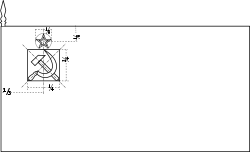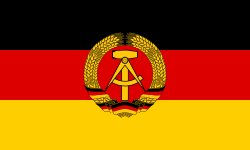Olympische Winterspiele 1972/Eiskunstlauf
| Eiskunstlauf bei den Olympischen Winterspielen 1972 | |
|---|---|
 | |
| Information | |
| Austragungsort | |
| Wettkampfstätte | Makomanai-Hallenstadion Mikaho-Sporthalle |
| Nationen | 18 |
| Athleten | 67 (32 |
| Datum | 4.–11. Februar 1972 |
| Entscheidungen | 3 |
| ← Grenoble 1968 | |
Bei den XI. Olympischen Winterspielen 1972 in Sapporo fanden drei Wettbewerbe im Eiskunstlauf statt. Austragungsorte waren das Makomanai-Hallenstadion (Kür und Kurzprogramm) und die Mikaho-Sporthalle (Pflicht).
Bilanz
Medaillenspiegel
| Platz | Land | Gesamt | |||
|---|---|---|---|---|---|
| 1 | 1 | 2 | – | 3 | |
| 2 | 1 | – | – | 1 | |
| 1 | – | – | 1 | ||
| 4 | – | 1 | – | 1 | |
| 5 | – | – | 1 | 1 | |
| – | – | 1 | 1 | ||
| – | – | 1 | 1 |
Medaillengewinner
| Konkurrenz | Gold | Silber | Bronze |
|---|---|---|---|
| Herren | |||
| Damen | |||
| Paare |
Ergebnisse
- K = Kür
- KP = Kurzprogramm
- P = Pflicht
- Pz = Platzziffer
- Pkt. = Punkte
Herren
| Platz | Land | Sportler | P | K | Pz | Pkt. |
|---|---|---|---|---|---|---|
| 1 | Ondrej Nepela | 1 | 4 | 9,0 | 2739,1 | |
| 2 | Sergei Tschetweruchin | 3 | 1 | 20,0 | 2672,4 | |
| 3 | Patrick Péra | 2 | 8 | 28,0 | 2653,1 | |
| 4 | Kenneth Shelley | 5 | 3 | 43,0 | 2596,0 | |
| 5 | John Misha Petkevich | 6 | 2 | 47,0 | 2591,5 | |
| 6 | Jan Hoffmann | 4 | 10 | 55,0 | 2567,6 | |
| 7 | Haig Oundjian | 9 | 7 | 65,0 | 2538,8 | |
| 8 | Wladimir Kowaljow | 7 | 11 | 80,0 | 2521,6 | |
| 9 | Toller Cranston | 12 | 5 | 80,5 | 2517,2 | |
| 10 | John Curry | 8 | 12 | 85,0 | 2512,2 | |
| 11 | Gordon McKellen | 10 | 9 | 89,0 | 2511,0 | |
| 12 | Juri Owtschinnikow | 15 | 6 | 104,5 | 2477,7 | |
| 13 | Didier Gailhaguet | 11 | 13 | 114,0 | 2440,9 | |
| 14 | Jacques Mrozek | 13 | 14 | 126,0 | 2401,3 | |
| 15 | Günter Anderl | 14 | 16 | 138,0 | 2313,6 | |
| 16 | Yutaka Higuchi | 16 | 15 | 140,0 | 2309,7 | |
| 17 | Gheorghe Fazekas | 17 | 17 | 153,0 | 2094,0 |
Datum: 11. Februar
Damen
| Platz | Land | Sportlerin | P | K | Pz | Pkt. |
|---|---|---|---|---|---|---|
| 1 | Beatrix Schuba | 1 | 7 | 9 | 2751,5 | |
| 2 | Karen Magnussen | 3 | 2 | 23 | 2673,2 | |
| 3 | Janet Lynn | 4 | 1 | 27 | 2663,1 | |
| 4 | Julie Lynn Holmes | 2 | 8 | 39 | 2627,0 | |
| 5 | Zsuzsa Almássy | 5 | 4 | 47 | 2592,4 | |
| 6 | Sonja Morgenstern | 8 | 3 | 53 | 2579,4 | |
| 7 | Rita Trapanese | 6 | 6 | 55 | 2574,8 | |
| 8 | Christine Errath | 11 | 5 | 78 | 2489,3 | |
| 9 | Charlotte Walter | 7 | 13 | 86 | 2467,3 | |
| 10 | Kazumi Yamashita | 10 | 10 | 93 | 2449,9 | |
| 11 | Jean Scott | 9 | 11 | 101 | 2436,8 | |
| 12 | Suna Murray | 13 | 9 | 102 | 2426,2 | |
| 13 | Cathy Lee Irwin | 12 | 12 | 116 | 2383,4 | |
| 14 | Isabel de Navarre | 16 | 14 | 128 | 2340,0 | |
| 15 | Anita Johansson | 14 | 15 | 131 | 2349,3 | |
| 16 | Dianne de Leeuw | 15 | 16 | 143 | 2298,7 | |
| 17 | Sonja Balun | 17 | 17 | 148 | 2260,6 | |
| 18 | Marina Sanaja | 19 | 18 | 160 | 2198,6 | |
| 19 | Chang Myung-su | 18 | 19 | 171 | 2117,0 |
Datum: 7. Februar
Paare
| Platz | Land | Paar | KP | K | Pz | Pkt. |
|---|---|---|---|---|---|---|
| 1 | Irina Rodnina / Alexei Ulanow | 1 | 1 | 12,0 | 420,4 | |
| 2 | Ljudmila Smirnowa / Andrei Suraikin | 2 | 2 | 15,0 | 419,4 | |
| 3 | Manuela Groß / Uwe Kagelmann | 3 | 3 | 29,0 | 411,8 | |
| 4 | JoJo Starbuck / Kenneth Shelley | 4 | 4 | 35,0 | 406,8 | |
| 5 | Almut Lehmann / Herbert Wiesinger | 5 | 6 | 52,0 | 399,8 | |
| 6 | Irina Tschernjajewa / Wassili Blagow | 6 | 5 | 52,0 | 399,1 | |
| 7 | Melissa Militano / Mark Militano | 8 | 7 | 65,5 | 393,0 | |
| 8 | Annette Kansy / Axel Salzmann | 7 | 8 | 68,0 | 392,6 | |
| 9 | Sandra Bezic / Val Bezic | 9 | 9 | 84,0 | 384,9 | |
| 10 | Corinna Halke / Eberhard Rausch | 10 | 10 | 87,0 | 381,1 | |
| 11 | Grażyna Kostrzewińska / Adam Brodecki | 11 | 11 | 95,5 | 377,8 | |
| 12 | Barbara Brown / Doug Berndt | 12 | 13 | 114,0 | 366,9 | |
| 13 | Florence Cahn / Jean-Roland Racle | 13 | 12 | 116,0 | 364,5 | |
| 14 | Linda Connolly / Colin Taylforth | 14 | 14 | 126,0 | 360,6 | |
| 15 | Mary Petrie / John Hubbell | 15 | 15 | 129,0 | 358,5 | |
| 16 | Kotoe Nagasawa / Hiroshi Nagakubo | 16 | 16 | 144,0 | 345,5 |
Datum: 8. Februar
Weblinks
- Eiskunstlauf bei den Olympischen Winterspielen 1972 in der Datenbank von Sports-Reference (englisch; archiviert vom Original)
Auf dieser Seite verwendete Medien
Pictograms of Olympic sports - Figure skating
Variant version of a flag of Japan, used between January 27, 1870 and August 13, 1999 (aspect ratio 7:10).
Variant version of a flag of Japan, used between January 27, 1870 and August 13, 1999 (aspect ratio 7:10).
Unicode Geschlechtersymbolder
(c) I, Cmapm, CC BY-SA 3.0
The flag of the Soviet Union (1955-1991) using a darker shade of red.

(c) I, Cmapm, CC BY-SA 3.0
The flag of the Soviet Union (1955-1991) using a darker shade of red.

Flagge Österreichs mit dem Rot in den österreichischen Staatsfarben, das offiziell beim österreichischen Bundesheer in der Charakteristik „Pantone 032 C“ angeordnet war (seit Mai 2018 angeordnet in der Charakteristik „Pantone 186 C“).
Flag of Canada introduced in 1965, using Pantone colours. This design replaced the Canadian Red Ensign design.
Die Staatsflagge der Deutschen Demokratischen Republik, vom 1. Oktober 1959 bis 3. Oktober 1990
Flagge des Vereinigten Königreichs in der Proportion 3:5, ausschließlich an Land verwendet. Auf See beträgt das richtige Verhältnis 1:2.
Flagge des Vereinigten Königreichs in der Proportion 3:5, ausschließlich an Land verwendet. Auf See beträgt das richtige Verhältnis 1:2.
Flag of Romania, (21 August 1965 - 22 December 1989/officialy 27 December 1989).

Construction sheet of the Flag of Romania as depicted in Decree nr. 972 from 5 November 1968.
- l = 2/3 × L
- C = 1/3 × L
- S = 2/5 × l
Flag of Italy from 1946 to 2003, when exact colors were specified.
Die quadratische Nationalfahne der Schweiz, in transparentem rechteckigem (2:3) Feld.
Flag of Second Polish Republic and later People's Republic of Poland in period from March 29, 1928 to March 10, 1980. Red shade used here is HTML "vermilion" #E34234. Proportion 5:8.
Flag of Second Polish Republic and later People's Republic of Poland in period from March 29, 1928 to March 10, 1980. Red shade used here is HTML "vermilion" #E34234. Proportion 5:8.
Olympic Rings without "rims" (gaps between the rings), As used, eg. in the logos of the 2008 and 2016 Olympics. The colour scheme applied here was specified in 2023 guidelines.
Olympic Rings without "rims" (gaps between the rings), As used, eg. in the logos of the 2008 and 2016 Olympics. The colour scheme applied here was specified in 2023 guidelines.
Flag of South Korea (1949-1984)
Autor/Urheber: maix¿?, Lizenz: CC BY-SA 2.5
A gold medal with the olympic rings inside
Autor/Urheber: maix¿?, Lizenz: CC BY-SA 2.5
A silver medal with the olympic rings inside
Logo der Olympischen Winterspiele 1972 Sapporo
Autor/Urheber: maix¿?, Lizenz: CC BY-SA 2.5
A bronze medal with the olympic rings inside























